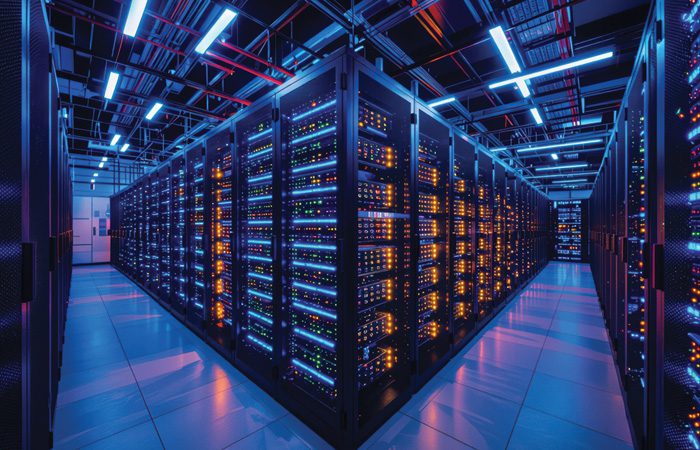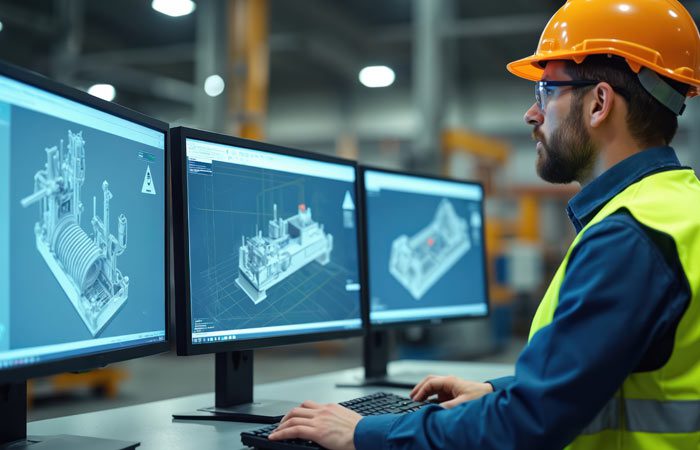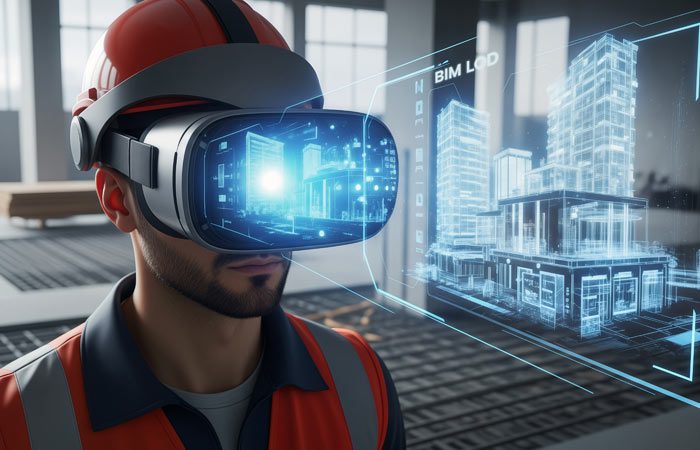
BIM for Data Centers: Engineering Reliability at Scale
What makes or breaks a data center?
It’s not just the servers, racks, or fiber cables—it’s the hidden network of mechanical, electrical, and fire protection systems that must perform flawlessly, 24/7. When even a few minutes of downtime can translate into millions in lost business, the way these facilities are designed and delivered becomes mission-critical.
That’s why Building Information Modeling (BIM) is fast becoming the gold standard for data center engineering. More than a 3D design tool, BIM is transforming how complex systems are coordinated, how spaces are optimized, and how facilities are operated long after commissioning. For data centers that demand both speed to market and lifetime reliability, BIM isn’t optional—it’s essential.
The Challenge of Complexity in Data Centers
Unlike most buildings, data centers aren’t simply about usable square footage. Every aspect of the design—airflow management, power distribution, cable routing, fire protection, and redundancy—carries direct implications for uptime and efficiency.
The challenge lies in the density of services. In overhead spaces, HVAC ducts compete with electrical busways, sprinkler lines, and cable trays. Under raised floors, cooling pathways must coexist with fiber and copper cabling. Add in modular growth strategies, strict fire codes, and future-proofing needs, and it’s clear why errors during design or installation can be extremely costly.
This is where BIM provides the clarity needed to navigate such high stakes.
Clash-Free Coordination of Critical Systems
Traditional 2D workflows leave too much room for error. Drawings from different disciplines—mechanical, electrical, plumbing, and fire protection—are often layered separately, leading to surprises during construction. In data centers, where systems are tightly packed, such surprises can trigger delays, rework, and even unsafe conditions.
BIM eliminates this uncertainty. By bringing all disciplines into a single digital model, engineers can run automated clash detection to identify conflicts long before construction begins. For example, an electrical busway cutting across a chilled water pipe is flagged instantly. Solutions can be explored virtually, without affecting construction schedules.
The result? A clash-free model that translates into smoother installation, fewer change orders, and guaranteed coordination between critical systems. For data centers, where timelines are non-negotiable, this reliability is invaluable.
Optimizing Space for Cooling and Cable Routing
Cooling remains the single largest consumer of energy in data centers, often accounting for over a third of total operational costs. Poorly planned layouts not only waste energy but also risk hot spots that can jeopardize equipment performance.
BIM allows designers to simulate airflows, evaluate containment strategies, and optimize hot-aisle and cold-aisle arrangements. By testing these configurations virtually, teams can fine-tune layouts for maximum efficiency and resilience.
Cable routing is another major challenge. Dense cabling networks can easily cause congestion, obstruct airflow, and complicate maintenance. With BIM, cable trays, risers, and conduits are modeled in detail, ensuring clearances and serviceability are built into the design. Maintenance teams benefit from predictable pathways, while operators enjoy easier scaling as capacity demands grow.
In both cases, BIM delivers a leaner, safer, and more maintainable environment—engineered for today’s loads and tomorrow’s growth.
Prefabrication and Faster Commissioning
The pressure to deliver data centers quickly is immense. Market demands for cloud services, edge computing, and AI-driven workloads are fueling a construction boom where time-to-market often determines competitiveness.
BIM accelerates this process through prefabrication and modular construction. By designing skids, cooling modules, or even fully modular data halls within the model, components can be fabricated off-site while civil works progress on-site. Once delivered, they fit seamlessly into place with minimal adjustments.
This parallel workflow can compress construction schedules dramatically—cutting weeks or even months from the timeline. Faster commissioning means operators can bring capacity online sooner, begin generating revenue earlier, and reduce exposure to risks typically associated with rushed builds.
In short, BIM enables data centers to scale rapidly without compromising on precision or reliability.
From BIM to Digital Twin: Extending Value Beyond Construction
The benefits of BIM don’t end when the keys are handed over. Increasingly, forward-looking operators are transforming BIM models into digital twins—living, dynamic replicas of their facilities.
By integrating real-time sensor data with the model, operators gain a powerful platform for ongoing management. Temperature, humidity, airflow, energy consumption, and equipment status can all be visualized in context. This enables predictive maintenance, allowing teams to spot potential issues—like a chiller operating inefficiently—before they escalate into downtime events.
Digital twins also provide a sandbox for scenario planning. Need to add more racks? Thinking of switching containment strategies? By simulating these changes virtually, operators can forecast impacts without disrupting operations.
The result is a facility that isn’t just built smarter, but operated smarter for years to come.
The Business Case for BIM in Data Centers
BIM adoption in data centers isn’t just a technical upgrade—it’s a strategic business decision. Consider the key advantages:
- Reduced Rework and Delays: Early clash detection saves both time and money.
- Optimized Energy Efficiency: Airflow and cooling layouts directly reduce operational costs.
- Faster Delivery: Prefabrication and modular workflows accelerate go-live timelines.
- Enhanced Safety: Proper clearances and maintainability baked into design improve long-term reliability.
- Smarter Operations: Digital twins enable predictive maintenance and future-proof scaling.
In an industry where uptime, efficiency, and speed are non-negotiable, BIM offers a future-ready foundation for success.
How TAAL Tech Delivers BIM for Data Centers
At TAAL Tech, we help operators translate BIM’s potential into measurable results. Our approach combines deep domain expertise with cutting-edge digital tools to engineer reliability at scale.
Our capabilities include:
- Integrated ASMEPF Modeling: Coordinating HVAC, power distribution, Plumbing, security systems , fire safety, structural systems and architectural elements into a single, clash-free environment.
- Fabrication-Ready Deliverables: Embedding prefab logic into models for seamless off-site assembly and faster installation.
- Operational Metadata: Delivering enriched models that form the foundation for digital twins, ensuring long-term asset value.
- Layout & Reliability Engineering: Designing with airflow efficiency, redundancy, and maintainability in mind.
- Drawing Creation & Documentation: Producing detailed construction drawings, shop drawings, and installation layouts directly from the BIM model to support field execution.
- Report Generation: Extracting material take-offs, clash reports, and coordination summaries to ensure accuracy and accountability across disciplines.
- Engineering Calculations & Specifications: Integrating load calculations, equipment sizing, and performance criteria into the model, alongside project-specific specifications, to ensure compliance with design standards and client requirements.
Whether it’s a hyperscale campus or an edge facility, TAAL Tech ensures data centers are delivered faster, optimized for performance, and resilient for the future.
Data centers are the beating heart of the digital economy, powering everything from cloud storage to artificial intelligence. But their reliability doesn’t happen by accident—it’s engineered from the start.
By adopting BIM, operators gain a powerful advantage: buildings designed for uptime, optimized for efficiency, and equipped for long-term resilience. From design and construction to operations and maintenance, BIM provides the digital backbone for the physical infrastructure that keeps our world connected.
For data centers aiming to meet the demands of today—and scale for tomorrow—the message is clear: BIM isn’t just about better design. It’s about engineering reliability at scale.


